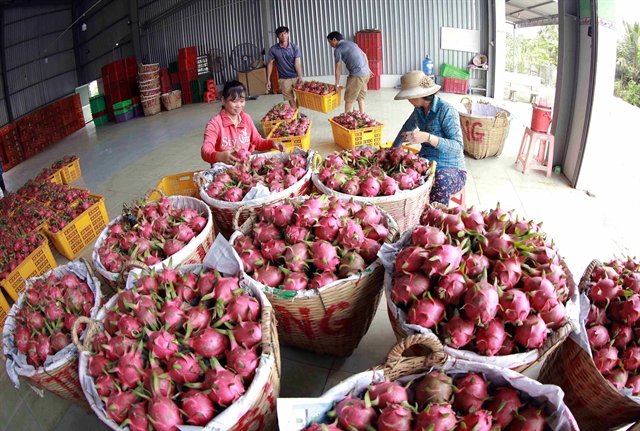 Economy
Economy

 |
| Vietnamese dragon fruit is highly appreciated by Indian customers for its quality. —VNA/VNS Photo |
HÀ NỘI — Vietnamese traders have many opportunities to promote agricultural exports to India, although they still face challenges.
India is a populous market that has a big demand for many kinds of farmed products, particularly fruit and vegetables.
The Ministry of Agriculture and Rural Development (MARD) said that Việt Nam and India both have strengths in agriculture, the export of agricultural, forestry and fishery products. However, the import and export of agricultural products between the two countries is still not large.
In 2023, Việt Nam's agricultural exports to India remained modest at US$507 million, accounting for about 1.5 per cent of India's total agricultural import turnover. This figure is not commensurate with Việt Nam's potential and strengths.
In addition to dragon fruit, India now has a great demand for importing other agricultural products such as pepper, coffee, cashew nuts, tea, vegetable oil, juice, sweet potatoes and passion fruit.
However, many cooperatives and enterprises think that approaching Indian customers and partners is still difficult, because they do not know how to search and establish business relationships. They also lack information about quality standards in this market.
Experts say that the quality standards for exporting agricultural products to India are not as strict as for the European or Chinese markets.
Chairman of Thuận Tiến Dragon Fruit Cooperative in Bình Thuận Province, Trần Đình Trung, said that India's population is about 1.4 billion people and the country's demand for dragon fruit is nearly 50 million tonnes each year.
Indians are mainly vegetarians, so the demand of vegetables and fruits is high, not only for daily consumption, but also for religious ceremonies. So there are opportunities for local traders to approach this market.
In particular, Vietnamese dragon fruit is highly appreciated by Indian customers for its quality. Many Indian delegations have recently studied the Thuận Tiến Cooperative at national and foreign fairs and followed with visits to growing and packaging areas, eventually signing export contracts.
However, according to Trung, the amount of dragon fruit to India is still modest, due partly to the remote geographical location.
Founder and CEO of Ago Import-Export Co, Ltd, Chí Anh, said that in the process of exporting dragon fruit to India, the company has faced problems caused by the distance, leading to quality being reduced.
The long geographical distance also makes the cost of transporting goods higher than exporting to some countries in the region, reducing the competitiveness of Vietnamese agricultural products.
Chí Anh said that India has high demand of importing some items such as turmeric, cinnamon and pepper, but cooperatives and enterprises must export products which are competitive compared to agricultural products from other countries.
To save costs, they can participate in online fairs or send information about their business and products to agricultural fairs and trade promotion conferences. They can also approach Indian customers through social networks.
Thuận Tiến Cooperative and Ago have approached Indian customers and had long-term contracts thanks to posting information about their business and products at international fairs. Following initial contacts, customers have been in direct contact and visited the businesses in Việt Nam.
Indians typically use social networks to work and connect with partners. So, the important things for customers in India are the businesses' core values and whether they carry out sustainable production or not, said Chí Anh.
Many foreign firms keep their eyes on Indian market to look at investment and business chances, said Rocky Ngọc Thạch, CEO of Smart Link Logistics. India is also known as a future market with high demand for business cooperation. Therefore, many shipping lines are now operating routes, with about 47 direct ships, on average, from Việt Nam to India every week.
He also said that, beside ensuring the quality of agricultural products, exporters need to pay attention to building brands. This will help them attract new customers, thereby increasing revenue.
They must select suitable customers and need to anticipate difficulties in transportation to have appropriate and safe preservation plans. — VNS




